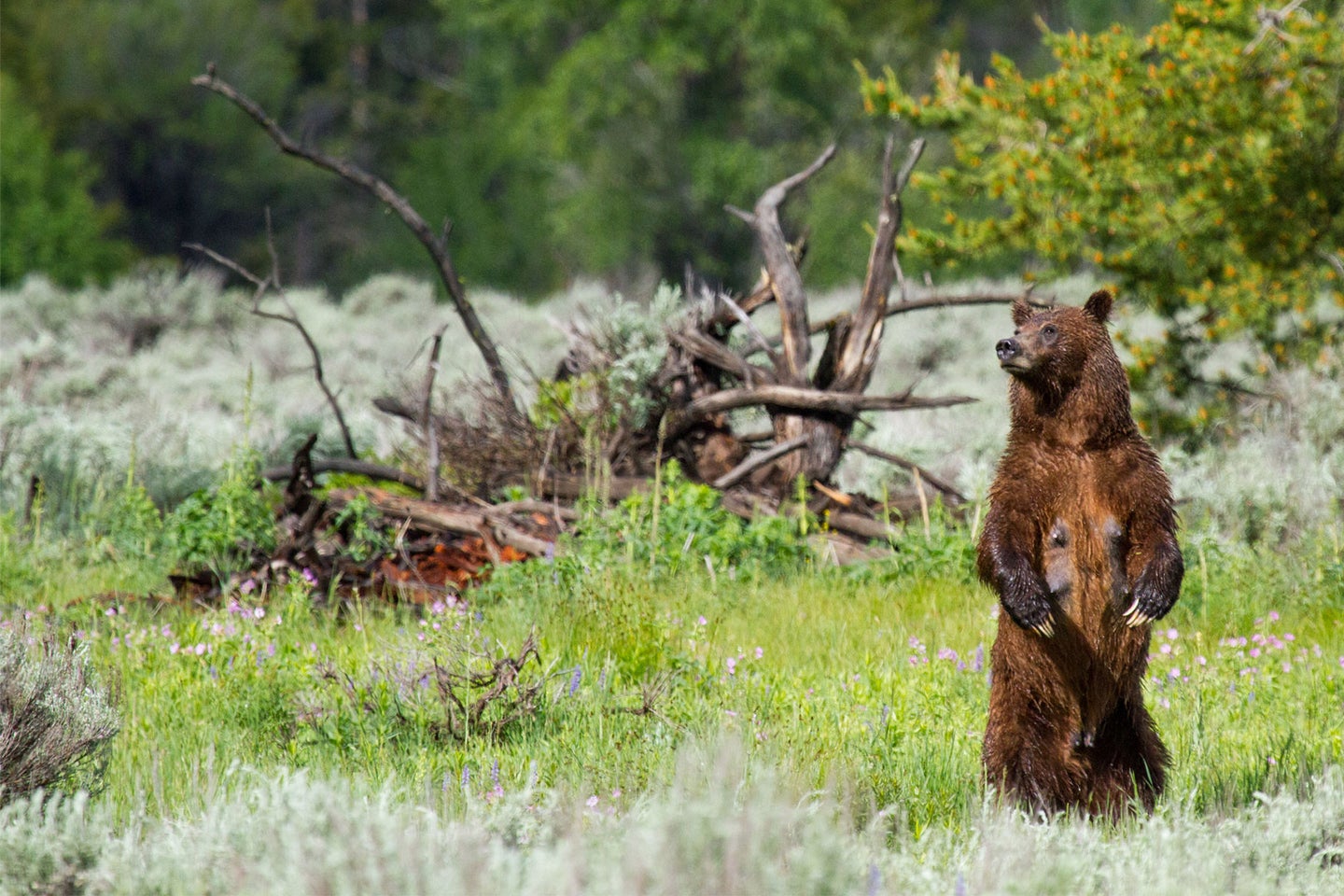Wyoming Euthanizes Grizzly Bear that Preyed on Rancher’s Cow Far From Typical Grizzly Habitat

Adobe Photostock.
Earlier this week, Wyoming wildlife officials euthanized a grizzly bear after the animal injured a rancher’s cow near the community of Ten Sleep. According to a press release from the Wyoming Game & Fish Department (WGFD), the bear frequented the ranch for a week before it attacked the cow. It was killed after a consultation with the U.S. Fish & Wildlife Service.
Tensleep is southwest of Wyoming’s Bighorn Mountains. As the crow flies, it’s close to 100 miles from the far eastern edge of the Greater Yellowstone Ecosystem (GYE)—a sprawling section of Wyoming, Montana, and Idaho known for its robust grizzly bear populations. The Bighorns, on the other hand, haven’t held stable grizzly populations in more than 100 years. And, according to its recent press release, the WGFD would prefer to keep it that way.
“Wyoming’s grizzly bear population is managed and monitored where suitable habitat exists as designated by the USFWS and informed by the Interagency Grizzly Bear Study Team,” said Game and Fish Director Brian Nesvik. “The Bighorn Mountain Range is not suitable habitat and the department is not interested in allowing grizzly bears to occupy this area. Their expansion into unsuitable habitat leads to increased conflict potential between bears and humans, which impedes the success of grizzly bear conservation.”
Joe Kondelis is a resident of Cody, Wyoming, an avid black bear hunter, and the founder of the American Bear Foundation. He tells Field & Stream he’s been hearing stories about hunters spotting grizzlies in the Bighorn Mountains for years, but the sightings are few and far between. “There’s not a viable population of them,” he says. “There’s maybe a straggler here or there. Historically, grizzly bears would have occupied that range in big numbers, but that was before we settled the West.”
According to Kondelis, grizzly bears have been spilling out of the far eastern edge of their known Wyoming habitat along the Absaroka Mountain Front for over a decade. But the WGFD usually captures and relocates the bears before they roam as far east as the Bighorn Mountains. “In the case of this bear he probably made it from the Absaroka Front—probably the Owl Creek range or south of Cody in the Meeteetse Country—and pushed east across the high desert sage of the Bighorn Basin before landing down in some good ranching and Ag country and getting into trouble.”
It’s the type of journey you’d expect from a young dispersing male, Kondelis says, particularly because Wyoming’s grizzly habitat is so saturated with the federally protected bears. “We’ve seen it in southern Wyoming. We’ve seen it all across Montana and into Idaho,” he says. “As these Demogaphic Monitoring Areas in the Recovery Zones become full, and younger age class bears need to find places to live, they’re spreading out. We’re going to see more and more of it.”
The post Wyoming Euthanizes Grizzly Bear that Preyed on Rancher’s Cow Far From Typical Grizzly Habitat appeared first on Field & Stream.
Articles may contain affiliate links which enable us to share in the revenue of any purchases made.
